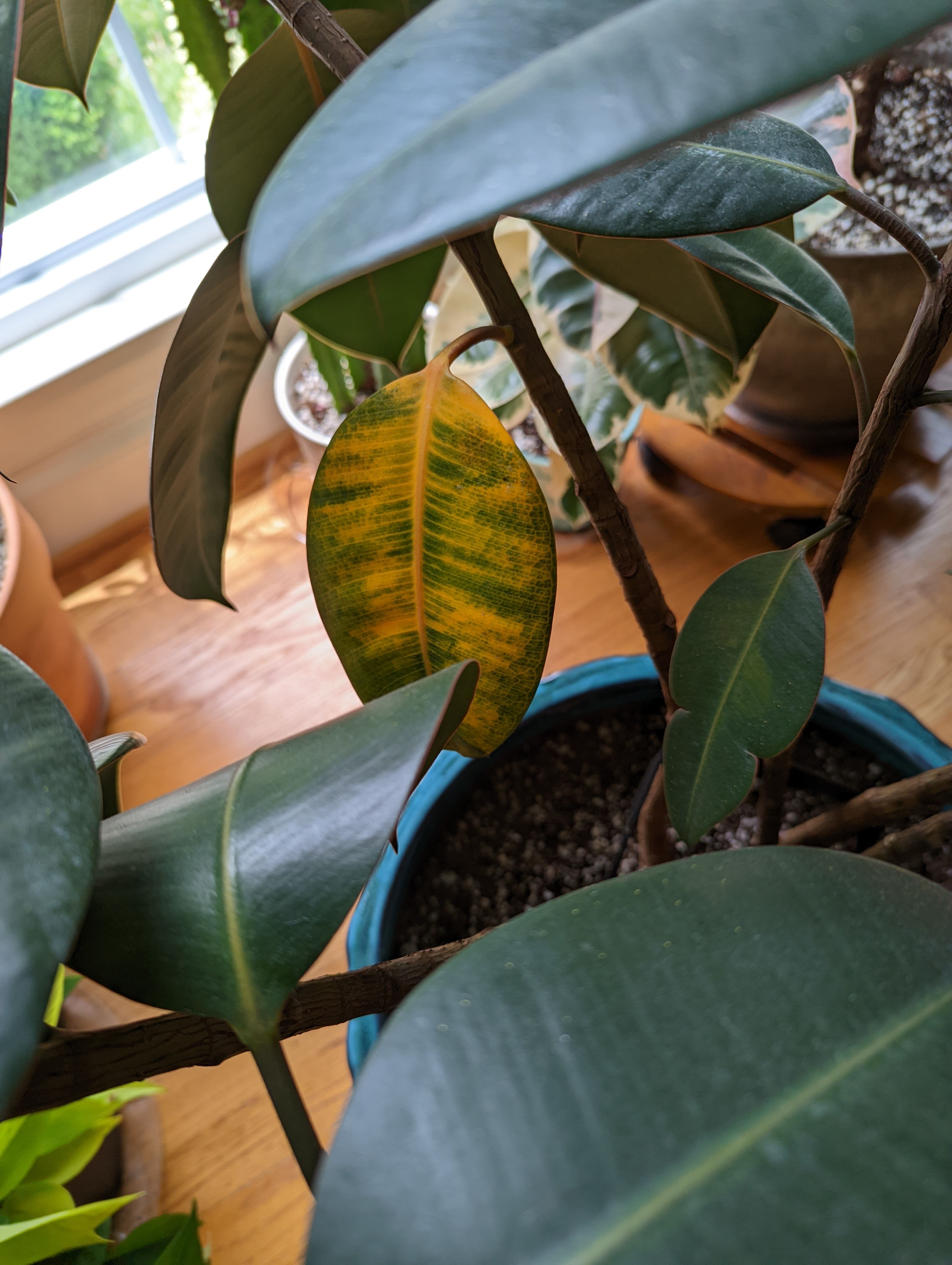All About Rubber Plant Fertilizer
Rubber Plants are common houseplants that can grow quite large given the right care and time. They come in a few varieties like Burgundy and Tineke. They sport thick glossy leaves. Rubber Plants grow a bit slow and that can lead people to think that they need to fertilize their plant to help it grow faster. However, there are some things you can't rush. In this post, I'll go over how often to fertilize Rubber Plants and what type of fertilizer is best. In addition, I'll cover signs of over fertilization and under fertilization and how to confirm both.
What's the Best Rubber Plant Fertilizer
Don't fall for the fertilizers "specially formulated for Rubber Plants," especially if you have more than one houseplant. Almost all of the common houseplants will do just fine with a balanced houseplant fertilizer. A balanced fertilizer is one that has equal or nearly equal ratios of three nutrients n-p-k, nitrogen, phosphorous, and potassium. These three nutrients are found in most houseplant fertilizers, and you'll find their ratios somewhere on the label. Of these nutrients, nitrogen is associated with growing healthy foliage. Phosphorous is associated with fruiting and blooming. Potassium is associated with overall plant health.
What Type of Fertilizer for Rubber Plants
A common ratio you'll see on houseplant fertilizer is 10-10-10, which I mentioned earlier is a balanced fertilizer. This means the fertilizer has equal parts nitrogen, phosphorous, and potassium. Sometimes these fertilizers are called all-purpose. In addition to the fertilizer being balanced, you want to look for liquid or water-soluble. Water-soluble just means it can be dissolved in water. These types of fertilizers can be absorbed immediately, which in general is preferable. Slower-release fertilizers, like sticks and cones, can be harder to keep track of in terms of fertilizer timing.
How Often to Fertilize Rubber Plants
It's important to follow the directions on the fertilizer bottle to make sure you don't under or over fertilize your Rubber Plant. It's especially important for dosing. If the instructions say to dilute in water, you should dilute it in a watering can. If it gives you instructions on how much to use for a certain size pot, that's also advisable to follow. One thing you might not follow is the frequency of fertilization. The all-purpose fertilizers will basically all instruct you to fertilize once a week. Some plants don't need that frequency, especially if they are slow growing. A Rubber Plant should only need fertilization once a month. In addition, you should not fertilize all year round, only during the growing season.
Overfertilized and Under-fertilized Rubber Plants
Fertilization issues have some unfortunate overlap in terms of the signs and symptoms, which can make it quite difficult to pinpoint your issue if you do indeed have a fertilization problem. See the list below for some common signs of nutrient deficiency and abundance. If the visible cues aren't enough for you to make a diagnosis, you should use soil rapitests. These tests measure the levels of the three main nutrients and the ph of your plant's soil.
- Nitrogen deficiency - is characterized by yellowish or pale green leaves.
- Potassium deficiency - is characterized by yellowing, scorching, or curling of the leaves.
- Phosphorus deficiency - is characterized by slow growth or darkening of the leaves.
- Overfertilization - is characterized by slow growth.
Under-fertilized Rubber Plant
If your Rubber Plant is lacking nutrients or showing any of the deficiency signs, you should start fertilizing. It's best to start slow. In addition, it's okay to use a balanced fertilizer even if you suspect your Rubber Plant might be deficient in just one nutrient. Watch your plant to see how it reacts in a week or so. Check if your plant has perked up or is sprouting a new leaf. These are signs that things are on the mend. If so, continue fertilizing as directed. Unfortunately, if you did have yellowing leaves due to under-fertilization, they will not regain color even with the fertilizer. You can let the leaf completely yellow and fall off on its own or pull it off.
One note about yellowing leaves is that it can be completely normal for some leaves to yellow. They don't last forever. If you have one or two leaves yellowing, and they are at the base of the plant, it's most likely not a problem. The older leaves will die off of your plant eventually. See an example of this below. The yellow leaf that the base of my Burgundy Rubber Plant is just an older leaf and not an indicator of under-fertilization because it's in isolation.

Overfertilized Rubber Plant
An overfertilized Rubber Plant might have slow or stalled growth. This is tricky, because I mentioned early that Rubber Plant are just slow growers in general. It can be difficult for some to determine if they have a problem or if that's just normal slow growth. In this case, I recommend the soil rapitests. I say that because you do not want to treatment your Rubber Plant for overfertilization unless, you're sure. It can be shocking to your plant. To treat an overfertilized Rubber Plant you should repeatedly flush the soil with water. I recommend using a sink or a bathtub, because it will probably get messy. Pour a lot of water through the soil so that it flows out of the bottom of your pot. You may need to do this several times. Be cautious of waterlogging the roots, because you don't want to add root rot to your fertilization problems. If you do have this problem, I have a post on overwatered plants as well.
Do you have any remaining questions about Pilea Fertilizer? Let us know below in the Comments section.
Add new comment